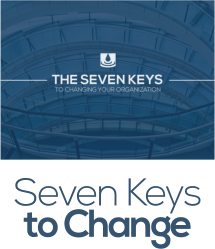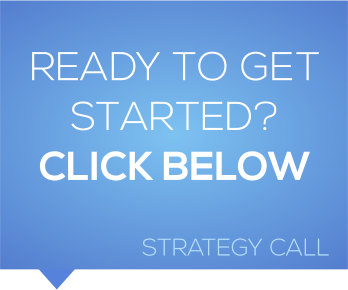


Why Conduct a Results-Oriented Conference?
Traditional conferences provide an opportunity for people with like interests to come together to network and learn.
Conferences have the potential to go far beyond that. They can bring together hundreds and even thousands of people to create consensus about real change, set new directions for your organization or industry, and affect public policy on national and international levels. They can even engage people in remote locations through video-conferencing and web-based interaction.
When dealing with complex, important issues, it’s difficult for one person or even a group of people to understand the perspective of the whole or anticipate how decisions will impact the whole. To create a truly dynamic future vision – and plans to accomplish that vision – requires bringing together all the various points of view in a meaningful interaction.
A powerful conference creates results in four key ways.
- Engages with multiple organizations, offices, and people who may be located across the country and even around the world.
- Brings the members of these disparate groups together through an inclusive process to agree on substantial and transformative goals, programs, and initiatives.
- Helps the conference members break new ground and form new alliances and networks.
- Empowers all parts of the system, helping everyone find ways to contribute.
When Would You Conduct a Results-Oriented Conference?
When you have a vision for the future that requires the active engagement, input, and creativity of a disparate group of people and organizations, a conference, Town Hall, or “think tank” can be a tremendously powerful way to create real results.
This type of conference is indicated when you want to address important issues such as…
- Brainstorming and committing to actions and changes in organizational direction.
- Directing research and creating policy on health, science, and other significant issues.
- Developing plans to implement alternative approaches to problems facing your organization or within your field of work or industry.
- Engaging demographic groups, such as the elderly, women, youth, and so forth, in helping solve issues they face.
- Inspiring creativity and determining new directions in fields as diverse as health care, science, performing arts, and public policy.
What Makes a Conference Effective?
I have facilitated several thousands of successful retreats and meetings over the past 35 years; these events have addressed a wide range of issues– both technical and non-technical– for a vast array of kinds of organizations– all with the hallmark of getting something done that was important for that particular group or organization.
The keys to creating a successful conference are…
- There is a compelling reason to conduct the conference.
- Decision-makers are committed to providing resources and incorporating conference outcomes into their strategy and plans for the future.
- The planning process includes multiple points of view.
- The design is thorough, from a clearly-defined purpose on down to the details of conference logistics.
- The conference is adeptly facilitated to ensure effective communication about purpose and process as well as inclusion of all participants’ viewpoints.
- Results are communicated post-conference, including action steps to bring the vision into reality.
- Follow-up and focus are maintained through structures that ensure implementation, monitoring of results, and evaluation of success.
A well-designed and well-executed conference can hold tremendous potential for impact. To take maximum advantage of the opportunity, an experienced and skilled conference designer and facilitator is invaluable.
I’ve conducted conferences, Town Halls, and “think tank” events that have brought together as many as 4,000 people to collaborate and set new direction for their organizations and fields of interest or work. Many of the programs have been international in scope – and many have been widely acknowledged for being innovative, effective, and fun for the participants.
What Makes a Conference Designer and Facilitator Effective?
A conference of this type needs a designer and facilitator who can…
- Act as a brainstorming and thought partner, helping bring the vision into reality.
- Identify and engage a wide variety of stakeholders in the planning process, guiding the planning to cover all aspects of the conference.
- Understand and effectively employ methods and technologies (see below) to work with groups large and small during the planning process and during the event itself.
- Facilitate the conference, providing the overall structure so participants are fully engaged and satisfied.
- Assist in maintaining focus on follow-through, including ensuring appropriate documentation and debriefing.
A Special Note about Supporting Technology
Interactive conferences are recognized for their ability to generate a rich range of ideas and help align and empower stakeholders. Because of this and other factors, they’ve been growing larger and larger – and that in turn has created significant challenges. A key question is, how can you bring people together in a way that maintains a sense of interactivity and dynamism – even in very large groups?
Fortunately, there are new technologies which, when employed appropriately, give participants in large conferences the exhilaration of feeling truly a part of the group, while preserving a sense of intimacy and direct engagement. These technologies include groupware computer systems, handheld keypad voting devices, as well as web-based and video-interactive tools. When seamlessly integrated into the conference design, participants are excited and feel fully a part of the group – no matter how large.
As one of the most experienced designers and facilitators of large group events in the United States, I’ve successfully integrated these technologies in groups from 50 up to several thousand people at a time.
Examples of Conferences I’ve Led Include…
- A global conference to bring together the disciplines of human health and veterinary medicine to address global pandemics, held in Salzburg Austria.
- A Congressionally mandated conference on health care fraud and abuse for the Health Care Finance Administration (now CMS).
- The interactive component of the Clinton Global Initiative in the area of global health, bringing the top 1,000 leaders in a wide range of government and private sector.
- A conference for 500 leaders at Cargill to identify strategies for enhancing communications and organizational alignment in a large global company.
- A conference in Bellagio Italy that brought together leaders in the food security system to identify the core leadership competencies required for food-system leaders.
- Meeting of Minds for the European Parliament for ordinary citizens to recommend policy changes in the neurosciences. Conducted in eight languages, it was the first major trans-European citizen dialogue on a scientific subject, and became a model for subsequent trans-European conferences.
- A meeting of 1,000 individuals in the United Kingdom to dialogue directly with the Minister of Health about improvements in the National Health Service.
- The opening 3-hour session of the World Economic Forum in Davos, Switzerland, to get world leaders to prioritize the key issues facing the planet.
- Donna Karan’s Urban Zen Initiative 10-day program to transform health care through complementary medicine and spirituality.
- Deepak Chopra’s Alliance for the New Humanity conference in Costa Rica to set an agenda for the transforming \global consciousness.
- A conference for the National Science Foundation to develop strategies to prepare the bio-technician workforce of the future.
- Conference to recommend to the Homeland Security Agency what needs to be done to ensure sufficient emergency medical services in the event of a national emergency.
- A conference for 1,000 members of the National 4-H organization to set a positive youth agenda for the 21st century.
- A conference of 1,500 young people in Washington to advise the Mayor on how to address youth needs and concerns.
- Advancing Futures for Adults with Autism – the first-ever major national effort to set an agenda for services for adults with autism.
- A national convention of 4,000 people in the performing arts to set a national agenda for the performing arts.
At the culminating event, you see this room packed with thousands of people in the arts who have never been in a room together before, and certainly never voted on what they would commit to do together. For the first three days of the conference, they’d been part of a process – that Daniel designed and facilitated – during which they’d actually distilled conclusions and successfully created a votable agenda that could be accomplished in one sitting. He had led those days with a kind of elegant drive, empathetic listening, and ruthless determination that produced results enabling us to make hard choices about what we were going to do and not going to do. The nitty-gritty results we got were actionable beyond the closing events of the day. He gave us the momentum to grab low-hanging fruit and then continue down the path we pioneered at that event. Every one of the 13 lead organizations credits change within their own art form to something that happened there in Denver. And this month – two years later – he’s been invited to be in a conversation about the ongoing impact.
I had a vision, and Daniel brought it to life. In 2009, Daniel designed and facilitated the first-ever think tank on issues facing adults with autism, and then designed and facilitated a Town Hall that engaged 1,000 people across 16 sites linked by video and groupware computers to set an action agenda for Congress and others. We have a national agenda that he helped us develop. We have state groups doing local and grassroots initiatives, we have lobbyists working in Washington, and we have every reason to believe that it’s going to result in policy change. We’re getting a lot of traction around establishing public policy that will support adults with autism, that will help create meaningful futures for families of adults with autism. We still have a lot of work to do, but that’s a huge deal for a community that had been operating in these little pockets of excellence, but never really collaborating. The idea that we did it together is an outcome in itself, because that never happens.



